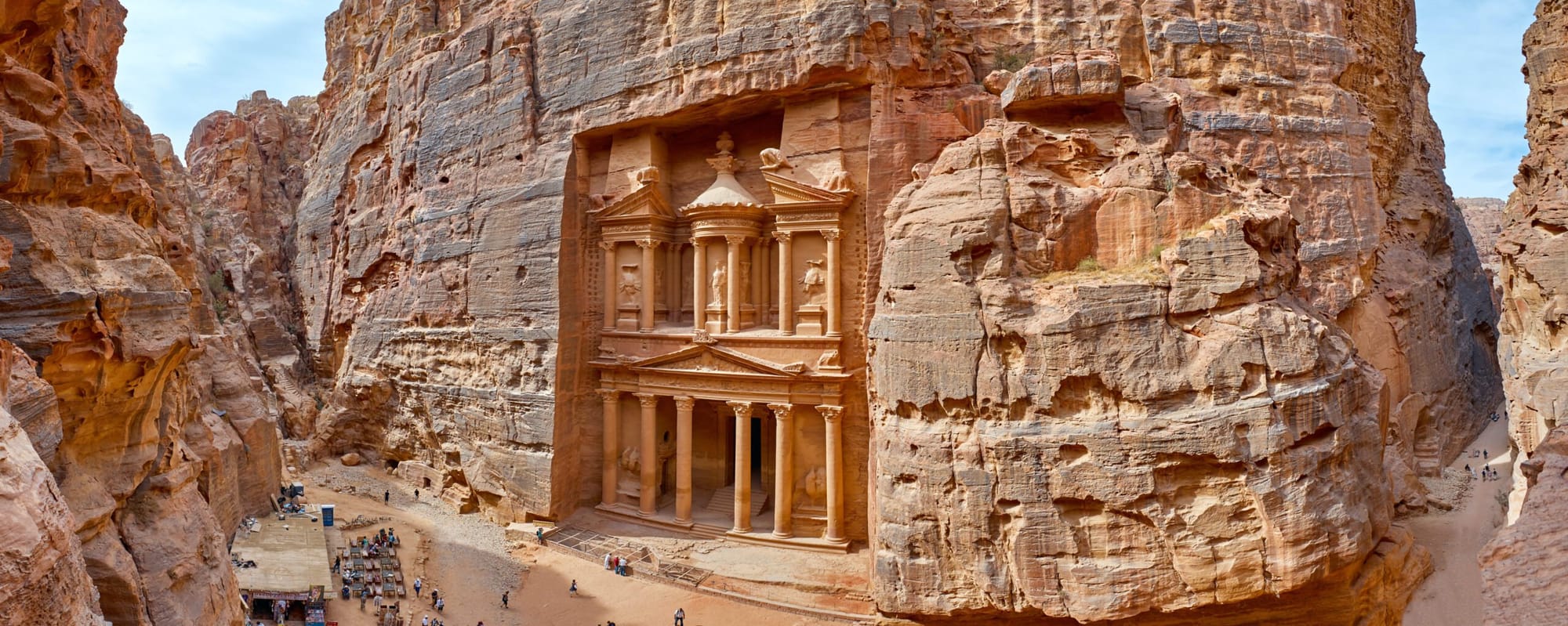
The extraordinary coloured rocks, celebrated tombs, and grand carved façades of the ‘rose-red’ city of Petra are among the world’s most impressive archaeological treasures. Ancient Petra was the capital of the Nabataeans, an Arab tribe who ruled a kingdom covering the greater part of Arabia. A shift in trade routes then led to the city’s demise, and for a thousand years Petra then lay forgotten to the West until rediscovered in 1812 by the Swiss explorer Johann Ludwig Burckhardt. The site is approached via the Siq, a dramatic narrow gorge of striking beauty hemmed-in by cliffs up to 80 metres in height. After 1.5 kilometres, the stunning Treasury (Al Khazneh) emerges dramatically through a narrow gap in the rock. Carved in the 1st century B.C. for an important Nabataean king, the massive façade draws its artistic influences from ancient Alexandria and is incredibly impressive. Further on, the giant Royal Tombs once rivalled the Treasury in their beauty. Along the Street of Façades, rows of rock-carved, multi-hued, tombs vie for your attention, as does the extensive rose-red theatre. A colonnaded street then takes you through the former city centre to the Qasr al Bint. This was probably the main temple of Petra and is the only freestanding structure to have survived centuries of earthquakes and floods.

If you have any inquiries , please send us an email to: info@hostofjordan.com